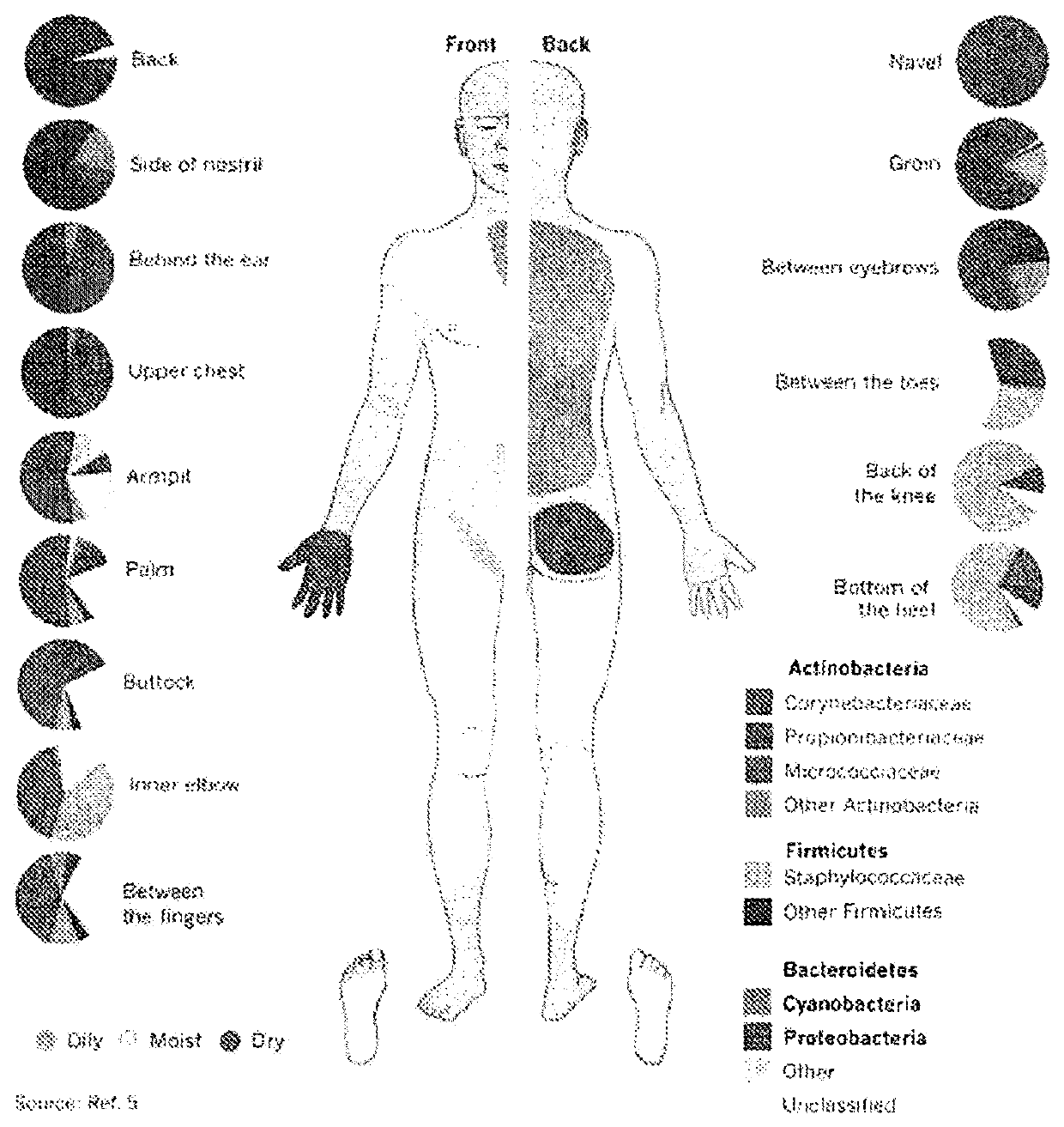Reducing the likelihood of skin cancer in an individual human being
a technology of individual human beings and microorganisms, applied in the field of improving can solve the problems of affecting the health of the microbiome, affecting the health of the individual human being, so as to and eliminate the virulence factors of such bacteria
- Summary
- Abstract
- Description
- Claims
- Application Information
AI Technical Summary
Benefits of technology
Problems solved by technology
Method used
Image
Examples
Embodiment Construction
[0032]The present invention stands in contract to accepted methods of dealing with skin and bacteria issues (which largely solely involve killing bacteria, etc—such as described in Kimberly Clark's U.S. Pat. No. 8,110,215 to Koenig, et al.) In contrast, various embodiments of the present invention are directed to modification of various bacteria on a person's skin so as to reduce the pathogenicity thereof and to rely upon competitive inhibition of such modified bacteria on the skin to reduce the presence of pathogenic bacteria on an individual's skin.
[0033]As set forth above, in particular embodiments of the present invention, contacting the skin of a newborn is performed to address the proper triggering of the newborn's immune system development. Thus, certain aspects of the present invention are directed to a method for altering the microbiome of an individual's skin by administering to a region of the skin of a newborn within the first 6 hours of the newborn's birth a particular ...
PUM
| Property | Measurement | Unit |
|---|---|---|
| time | aaaaa | aaaaa |
| time | aaaaa | aaaaa |
| time | aaaaa | aaaaa |
Abstract
Description
Claims
Application Information
 Login to View More
Login to View More - R&D
- Intellectual Property
- Life Sciences
- Materials
- Tech Scout
- Unparalleled Data Quality
- Higher Quality Content
- 60% Fewer Hallucinations
Browse by: Latest US Patents, China's latest patents, Technical Efficacy Thesaurus, Application Domain, Technology Topic, Popular Technical Reports.
© 2025 PatSnap. All rights reserved.Legal|Privacy policy|Modern Slavery Act Transparency Statement|Sitemap|About US| Contact US: help@patsnap.com

